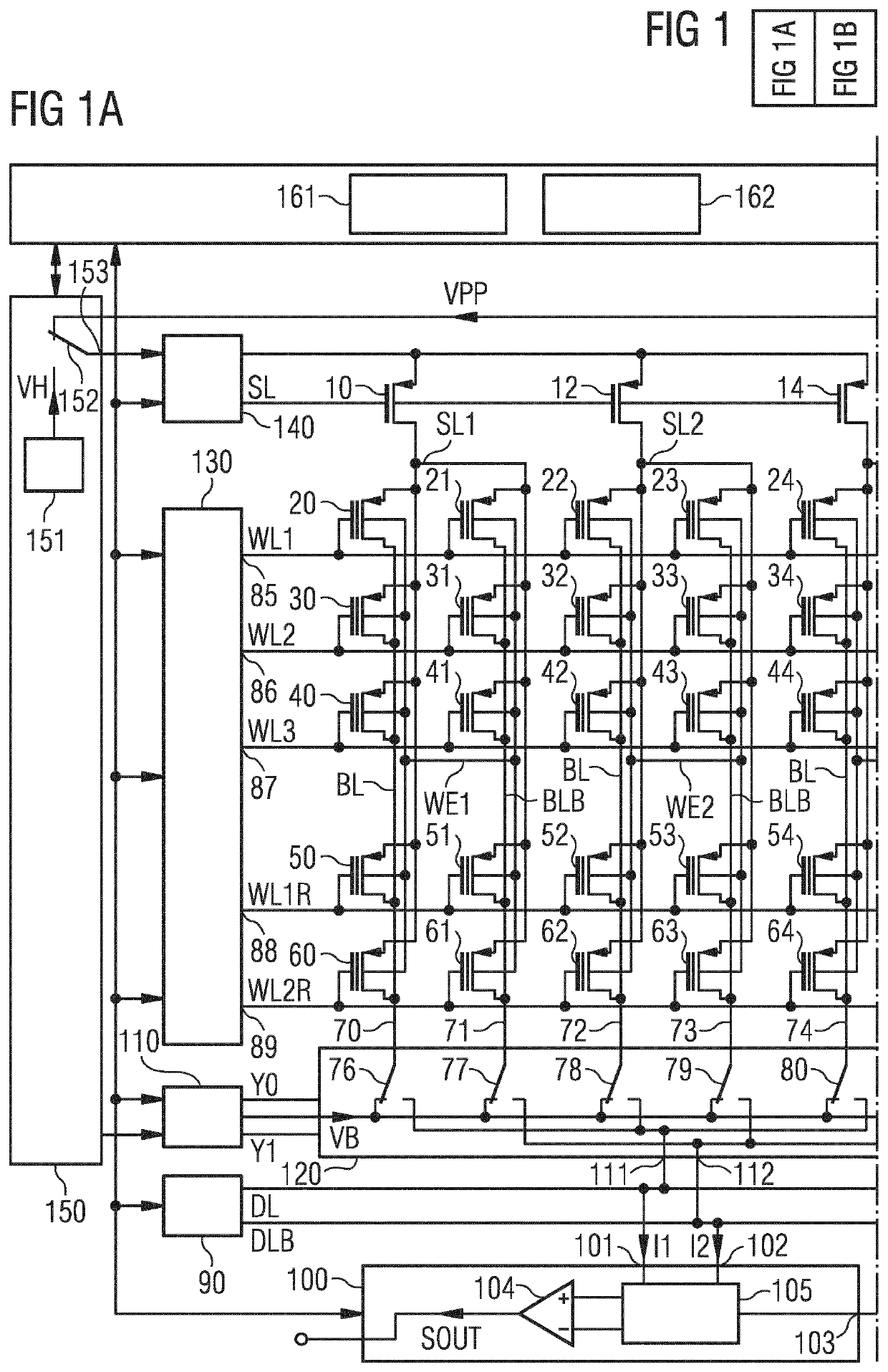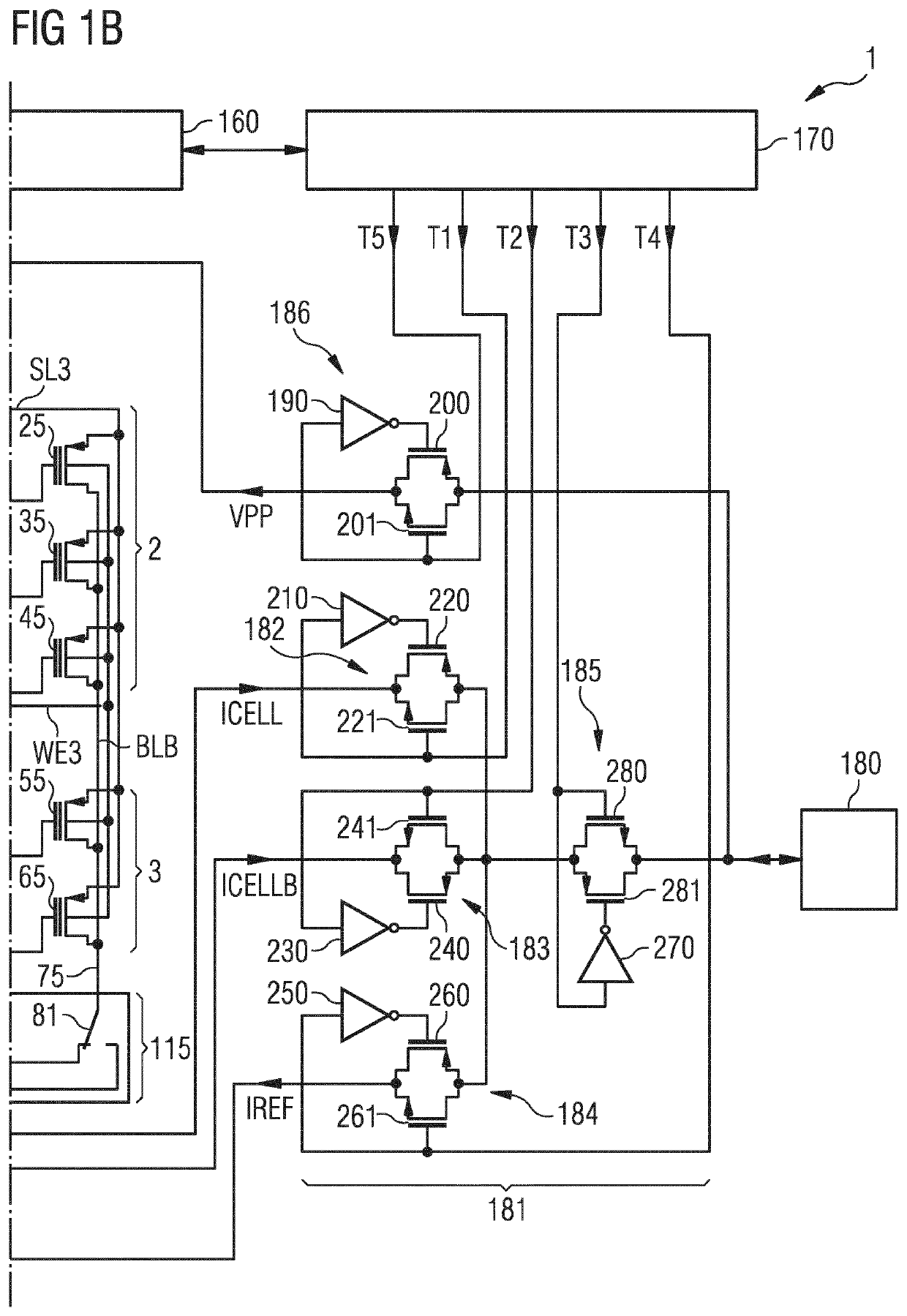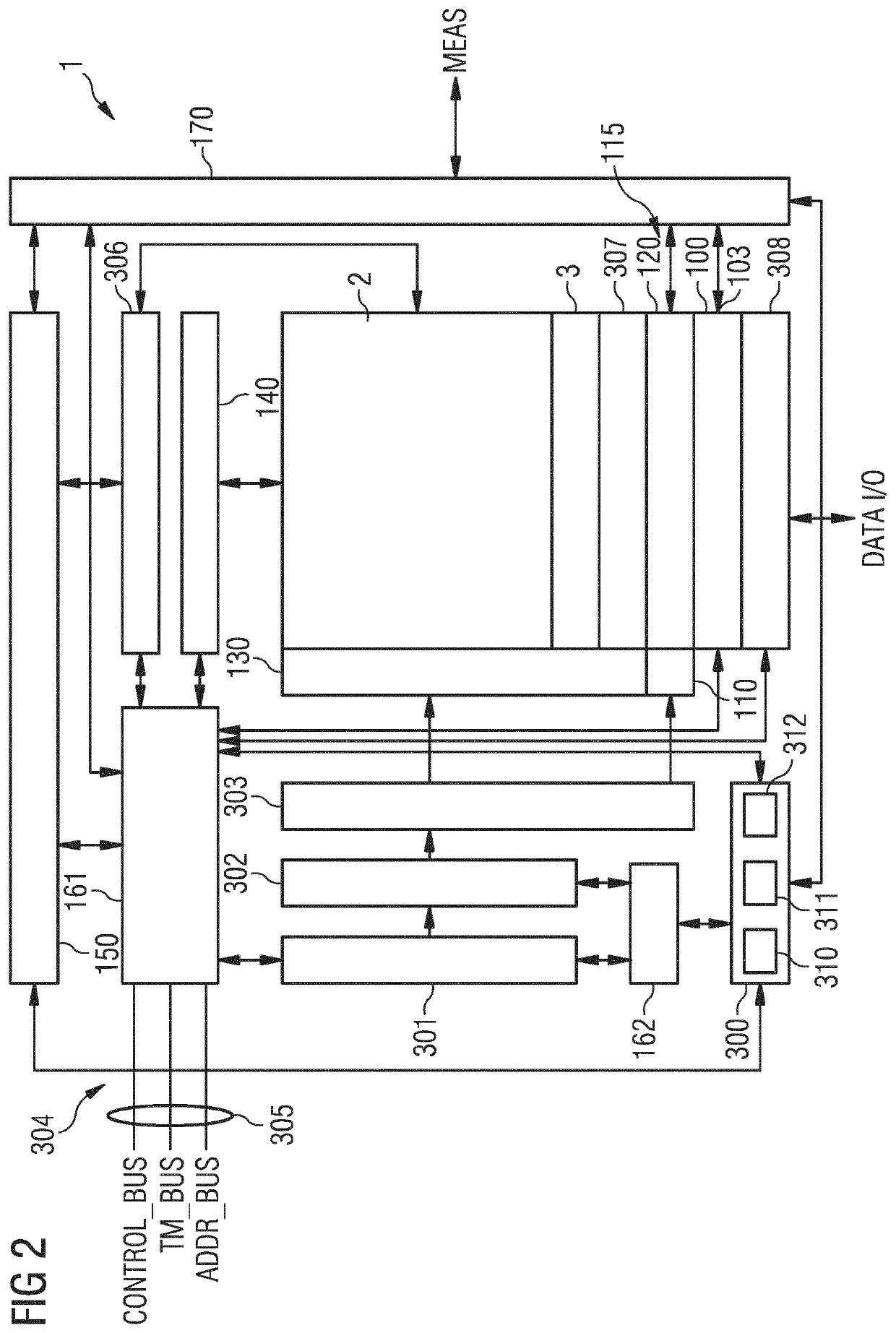Memory arrangement and method for operating or testing a memory arrangement
a memory arrangement and memory technology, applied in the field of memory arrangement and method for operating or testing a memory arrangement, can solve the problems that failures of bit cells typically limit the lifetime of a memory arrangement, and achieve the effects of reducing reliability, reducing endurance cycles, and reducing failures
- Summary
- Abstract
- Description
- Claims
- Application Information
AI Technical Summary
Benefits of technology
Problems solved by technology
Method used
Image
Examples
Embodiment Construction
[0068]FIG. 1A shows an exemplary embodiment of a memory arrangement 1 comprising a non-volatile memory plane 2, a replacement plane 3, a y-decoder arrangement 115 and a sense amplifier arrangement 100. Both the non-volatile memory plane 2 and the replacement plane 3 are coupled via the y-decoder arrangement 115 to the sense amplifier arrangement 100. Non-volatile memory is shorted to NVM. A plane can also be called array. Thus, the non-volatile memory plane 2 can also be named non-volatile memory array. The replacement plane 3 can also be called replacement array. The NVM plane 2 comprises a first and a second bit cell 20, 21. The first bit cell 20 comprises a first memory transistor having a control terminal, a first and a second terminal and a substrate terminal. Correspondingly, the second bit cell 21 comprises a second memory transistor having a control terminal, a first and a second terminal and a substrate terminal. The first bit cell 20 is configured for non-volatile storage ...
PUM
 Login to View More
Login to View More Abstract
Description
Claims
Application Information
 Login to View More
Login to View More - R&D
- Intellectual Property
- Life Sciences
- Materials
- Tech Scout
- Unparalleled Data Quality
- Higher Quality Content
- 60% Fewer Hallucinations
Browse by: Latest US Patents, China's latest patents, Technical Efficacy Thesaurus, Application Domain, Technology Topic, Popular Technical Reports.
© 2025 PatSnap. All rights reserved.Legal|Privacy policy|Modern Slavery Act Transparency Statement|Sitemap|About US| Contact US: help@patsnap.com



